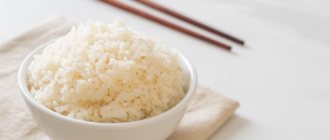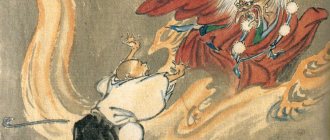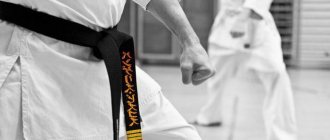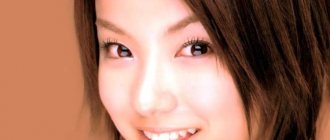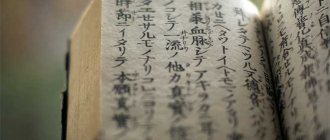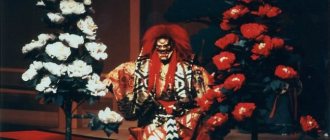The Japanese bath has little in common with traditional European baths and saunas.
The process of ablution in the countries of the East belongs to completely different cultural traditions, the history of which goes back many centuries. This is not just a hygienic procedure - it is a ritual designed to preserve the health, beauty and youth of the body, as well as inner spiritual harmony and tranquility.
What is it - a Japanese bath
A Japanese bathhouse is a spacious room with good ventilation and a flow of fresh air. There is no steam room, sink, brooms or other bath paraphernalia. Instead, the room contains a large wooden container, called a furaco, and a couch for relaxing.
The main purpose of a Japanese bath is to relax the body and mind, take a break from worries and tune in to peace.
Images of Mount Fuji in sento
Many sento sell milk at the counter at the entrance or in the locker room. Drinking milk after a bath is a special Japanese custom. Often in sento you can see an image of Fuji painted on the wall, or a pipe serving as a hood or chimney, these are some kind of symbols of sento. However, in recent years, paintings on walls can be seen less and less often, and at the moment (March 2015) there are only three masters of such paintings left.
To get to know the Japanese sento culture better, we can recommend the manga comic “Thermae Romae” and the film of the same name based on it. During the course of the story, an ancient Roman engineer building Roman baths accidentally ends up in modern-day Japan and receives information about the culture of sento and onsen, which gives him new ideas for constructing Roman baths. It amusingly describes the fictional deep connections between Roman baths and Japanese baths.
This manga also exists in translation into seven languages, including English, Spanish, French, and Chinese. The film “Thermae Romae I”, released in 2012, received the audience award “My movie First award” at the Far East Film Festival, and the second film, “Thermae Romae II”, released in 2014, received warm responses in North America, Italy and other countries.
Features of Japanese baths
The Japanese sauna is fundamentally different in that it uses not hot steam or air, as in the vast majority of baths and saunas, but heated water. The prerequisites for the emergence of such hygiene procedures are the following factors:
- The predominant religion in Japan is Buddhism, which prohibited the use of soap, because at that time it was made from the fatty tissue of killed animals. But it is impossible to effectively wash off impurities from the skin without soap, so they began to use hotter water. For an unaccustomed European, the water temperature in a Japanese sauna is almost unbearable.
- Religious views prohibited wearing clothes made from wool and fur. Light cotton fabrics are not able to warm the body.
- The climatic conditions on the Japanese islands are quite harsh. It is always humid and damp, and in winter temperatures drop below 0° C. Traditional homes always had thin walls and were cold. To keep warm and not get sick from hypothermia, they used a unique Japanese sauna in the form of a container with hot water.
- Since ancient times, the Japanese have used thermal springs for these purposes, of which there are a large number throughout the country. But not everyone could get there freely, since they were not always located close to home. As an alternative, a barrel of very hot water was used.
Nowadays the Japanese use various cosmetics, and this kind of bathhouse is more of a healing nature, since it strengthens the immune system, strengthens the body, improves metabolic processes, increases efficiency and lifts the mood.
Features of Tokyo sento
Sento are often characterized by the Miyazukuri architectural style, in which Shinto shrines and Buddhist temples are built. However, this is a feature of the Tokyo region. During the recovery period after the Great Kanto Earthquake of 1923, carpenters who knew how to build temples sought to improve people's spirits and built sento, which had previously had a very modest appearance, more beautiful, in a temple style with “Chinese” curved roofs. Such sentō were highly regarded, and later sentō construction often followed this example. Subsequently, this style began to be called “Tokyo sento style.” The regions do not have their own special styles of sento.
Meiji-mura Museum in Prefecture IT. The Handa Azuma-yu bathhouse transported and displayed here was built around 1910. She has a very modest appearance
Miya-zukuri style sentō, built around 1960. Construction is said to have taken only about three months (photo credit)
If we talk about the features of traditional Tokyo sento, we can point to the already mentioned miya-zukuri style, high ceilings in the locker room, the presence of a courtyard, and a large painting is usually painted on the wall above the pool.
An attendant (bandai) at the Myojin no Yu sento in Tokyo's Ota district. His job is to sit in the dressing room, accept payment from visitors and sell soap and other goods. He sits on a raised platform to monitor the well-being of visitors. The highest positions for duty officers were in central Tokyo, with an average height of 1.3 m
The painting above the pool often depicts Mount Fuji. The first such penkie painting (oil painting) appeared in 1912, when the owner of the Kikayu sento in the Sarugakucho quarter of Kanda wanted to bring joy to the children of his clients and asked the Western-style artist Kawagoe Koshiro to paint the landscape of his native places in Shizuoka Prefecture with Mount Fuji. People liked it, and such paintings began to be painted in other places in Tokyo and the surrounding area. In a Tokyo-type sentō, the pool is located under the painting and the sea, river or lake in the painting, creating a unified space, and people plunge into the water as if purified by the presence of Mount Fuji - this body cleansing probably originates from the ancient Japanese concept of ritual cleansing through misogi (ablution). This assumption is also confirmed by the fact that in areas where pictures of Fuji are not painted in sento, the pool is located not against the wall, but in the center.
The first sento painting of Mount Fuji, painted by Kawagoe Koshiro (photo courtesy of Machida Shinobu)
In addition, there is often a koi pond in the courtyard. This is due to the benevolent symbolism of carp. In the baths you can also see tairu-e paintings (tile paintings), almost all made in the Kutani ceramic workshops in central Japan.
Paintings on tiles are one of the visual pleasures of sento. Carps are often depicted because they have a benevolent meaning. This painting was photographed at the Ninjin no Yu sento in Prefecture. Ishikawa, now no longer working
Above we have given the features of Tokyo sento, and all their common features are not directly related to bathing. Why do they hold on to them so much and spend money on it? This may be rooted in the traditional Edo preoccupation with ostentation, but I also think it is also because they acted as places to relax the soul through their mesmerizing, bold visuals and escapist spaces.
This assumption is also supported by the “Chinese” style of the curved roofs of the front part of the building - this style, characteristic of temples, seems to indicate that here is the entrance to the Buddhist paradise, the Pure Land of Extreme Joy. It is because of such associations that this style, used in the construction of temples and sanctuaries, was used, for example, in the design of hearses and "gay quarters".
Sento "Daikokuyu", sometimes called the "king of sento", in Tokyo's Adachi district. The main entrance is not currently in use, enter through the entrance on the right side of the building, not included in the photo
The curved roof of the Akebonoyu sento in Asakusa, Daito Ward. Wisterias are planted above the entrance, which are covered with flowers in May
Sequence of procedures in a Japanese bath
In Japanese bath traditions, the sequence of treatments is extremely important. Each step must have a corresponding effect, without which it is impossible to proceed with subsequent steps.
In a Japanese bath, you must go through the following steps in sequence:
- Take a shower.
- Steam and warm up your feet in a special bath.
- Then a foot massage is performed. This stage is preparatory. During the massage, biologically active points are activated, of which there are a large number on the feet. The result of this procedure is an appropriate mood for relaxation and relaxation.
- Immerse yourself chest-deep in a furaco - a barrel filled with water at a temperature of +35...+45° C, for 10-15 minutes. Warm water should not reach the heart line, as this will cause unnecessary stress and poor health.
- Get out of the barrel, wrap yourself in a towel and lie down on the couch to rest.
- Now start taking dry baths. First, they are immersed in ofuro - a container filled with sawdust heated to +45...+50°C for 10-15 minutes.
- Take a shower again to wash away any remaining sawdust.
- This is followed by ofuro with stones, which are heated to +50…+60° C.
- The last and final stage is the tea ceremony.
For bathing in Japan, special barrels and bathtubs made of coniferous wood are used.
Valuable advice
Before visiting a Japanese bath, it’s a good idea to familiarize yourself with a few tips:
- You can visit the bathhouse every day, but initially it is better to limit yourself to procedures every other day.
- All procedures are recommended to be carried out in the evening, but only before dinner. Eating before such a bath can result in digestive problems.
- After a bath, you need to wrap yourself in a warm robe or terry towel; do not immediately become overcooled.
- You should abstain from alcohol, replacing it with healthy natural tea or, as a last resort, water.
- After a hot bath, it would be a good idea to massage with a hard mitten.
- During the relaxation stage, you can cover yourself with a warm blanket to increase sweating.
Japanese bath furako
The key attribute of the Japanese bath is the furako barrel, which is a large round (sometimes oval) container made of valuable wood (cedar, oak, etc.). The container is equipped with a stove for heating water. Furaco options for the home are equipped with gas or electric stoves. For an outdoor barrel, a wood stove is more suitable. Traditional Japanese baths have always been heated with wood.
The Japanese barrel sauna is divided from the inside by a lattice wooden partition. In one compartment the bathing procedure is carried out, the other is intended to accommodate a heating device. In some designs this device may be external. The ablution compartment is equipped with a wooden bench around the entire perimeter for comfortable seating for visitors. The furaco font with a stove can accommodate from 2 to 8 people.
The water is heated to +35...+45° C, to enhance the positive healing effect, incense, aromatic oils, herbal decoctions and infusions, flower petals, etc. are added to it. The very material of the barrel from which it is made releases phytoncides into the hot water. These substances have a positive effect on the human body, providing tonic and restorative effects.
The beneficial effects of the Japanese barrel of furaco are the following:
- with sweat secretions, a large amount of waste and harmful toxins are removed from the body;
- metabolic processes and the functioning of the immune system are stimulated;
- the condition of the skin improves, pores open;
- the activity of the heart and blood vessels is normalized;
- helps in the prevention and treatment of diseases of the genitourinary system, musculoskeletal system and respiratory tract diseases.
The design of the Japanese barrel bath includes a lid with which it is closed in the absence of visitors and to protect it from unwanted debris (in the street version).
Japanese bath ofuro
A Japanese bath can be made in the form of a rectangular box. For production, specially processed cedar, teak, ash or oak wood is used. This container has thick walls and is equipped with a heating system, which is located in its bottom. Heating systems are equipped with various additional options - thermostat, remote control, etc. The size of the box varies, depending on the number of people it can accommodate. More often, such a bath is intended for one visitor. He lies down in it at full length.
The ofuro font is filled with sawdust (larch, cedar, linden, oak) mixed with dry leaves, medicinal herbs (more than 60 types), roots and aromatic essential oils. The mixture is heated to +45...+50° C. The weight of sawdust is about 45-50 kg, the top layer (about 2 kg) is removed and renewed after each visit to the bath.
They are immersed in the sawdust bath up to their necks and remain there for no more than 30 minutes. During this time, the skin warms up well. Increased sweating begins, during which toxins are released from the body. The sweat is immediately absorbed by the sawdust.
At the same time, the heated sawdust itself releases beneficial oils and volatile substances that have a healing effect on the skin (destroy germs and bacteria, heal wounds, relieve irritation, etc.). Aromatic components activate metabolic processes and slow down aging. Ofuro bath is considered the best remedy for rejuvenation and weight loss.
After visiting a bath with sawdust, you are supposed to undergo a similar procedure in a box with dry pebbles heated to 60°C, covered with a sheet or towel. They lay on it with their back and lie for 10-15 minutes. You can lie on your stomach, in which case heated stones are additionally placed on your back along the spine. There are options for the ofuro bathhouse in volcanic ash.
How is it useful?
In addition to the obvious effect of excellent cleansing, the Japanese bath has other beneficial properties:
On a regular visit:
- Stress and nervous tension are reduced. Long relaxation sessions help fight depression and anxiety.
- Through heated skin, waste and toxins are well removed. Tree resins are disinfected and disinfected.
- Along with sweat, excess fluid comes out, swelling decreases, and weight normalizes. It is believed that the Japanese rarely gain extra pounds, largely due to regular visits to the bathhouse.
- Helps with muscle spasms or after intense exercise. Hot stone baths also have the ability to relieve myalgia.
- Blood circulation improves. This is a good prevention of cardiovascular diseases.
- The condition of the joints improves. It is especially recommended to visit Japanese baths for people with gout, arthrosis, arthritis, etc. Healing sessions relieve pain and increase mobility.
- It has an excellent effect on the skin, accelerates regeneration processes and has a rejuvenating effect. Taking baths with sawdust is a kind of peeling.
- With long-term visits to the bathhouse, the immune system is strengthened, and the visitor is less likely to be exposed to colds and viral diseases.
When visiting a Japanese bath, you should pay attention to contraindications:
- Pregnant women should not practice such procedures.
- Also, children under 3 years of age should not visit the bathhouse.
- If you have cardiovascular diseases, you must first consult a doctor.
- Serious diseases of the respiratory system, for example, tuberculosis, are a reason to refuse to visit a Japanese bath.
- Exacerbation of chronic or colds and viral diseases is not the best time for such procedures.
Japanese sento bath
Japanese public baths, sento, are very popular. Such a bathhouse is a fairly spacious and well-ventilated room, which houses a spacious but shallow pool with hot water (+50...+55° C). The size of the pool varies, sometimes it can accommodate up to 100 people. There are always 2 sections in a sento: women's and men's. The premises for women are more spacious and have many mirrors.
First, remove all clothing in a room equipped with separate booths. Afterwards, you should thoroughly wash your body using various hygiene products (soap, shampoo, washcloths, etc.). A special washing room is designed for this purpose. There they wash themselves under the tap, sitting on a low bench. In Japanese traditions, it is customary to wash using a contrast shower.
Only after this can you dive into the hot water of the pool. The time spent in the pool is no more than 10-15 minutes; staying there longer is harmful to the body. The Japanese bathhouse has special relaxation rooms where you can lie down after taking hot treatments. Tea drinking is the traditional end of the bath ceremony.
Initially, sento baths were intended and built only for priests; they looked rather unpresentable and ascetic. But gradually the baths became available to the rest of the population. The premises began to be decorated with paintings on the walls (waterfalls, volcanoes, cherry blossoms, etc.), which invite contemplation and reflection.
Questions and answers
What oils are suitable for furaco?
In Japanese tradition, oils are used when bathing depending on the desired effect. Chamomile, sage, and valerian will have a calming effect. Citrus fruits are suitable for a cosmetic effect, and verbena and geranium are suitable for headaches and cramps.
How not to overheat in furaco for the first time?
Be sure to listen to your body; if you feel dizzy, it is better to leave the bath and rest for a while, or take a shower at a cooler temperature.
What temperature should the tea drunk after procedures be?
To increase sweating, be sure to drink the tea hot.
Is it possible to use soap in the bath?
Even in modern times, soap is not used in a Japanese bath. It is allowed to soap the skin only at the stage of taking a shower before the procedures.
Are there any additional procedures at sento besides bathing?
No, visitors can only be offered a tea ceremony or a special place for relaxation.
